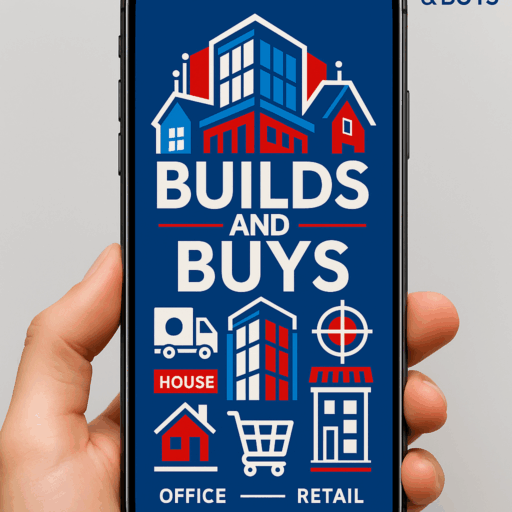Plumbing and Electrical Tasks
This section guides you through the **essential steps** of installing plumbing and electrical systems. Proper planning and installation ensure **safety, efficiency, and long-term reliability** for your home or building.
- Track Your Progress: Check off each phase of plumbing and electrical work to stay on schedule.
- Stay Notified: Receive alerts for permits, inspections, and utility connections.
- Step-by-Step Guidance: Follow detailed instructions for pipe installation, wiring, fixture placement, and safety measures.
- Prevent Costly Issues: Learn how to avoid common mistakes that can lead to **leaks, circuit failures, or code violations**.
Whether you’re installing **water lines, drainage systems, electrical wiring, or smart home features**, this section provides the guidance needed to **ensure a safe, efficient, and code-compliant installation**.
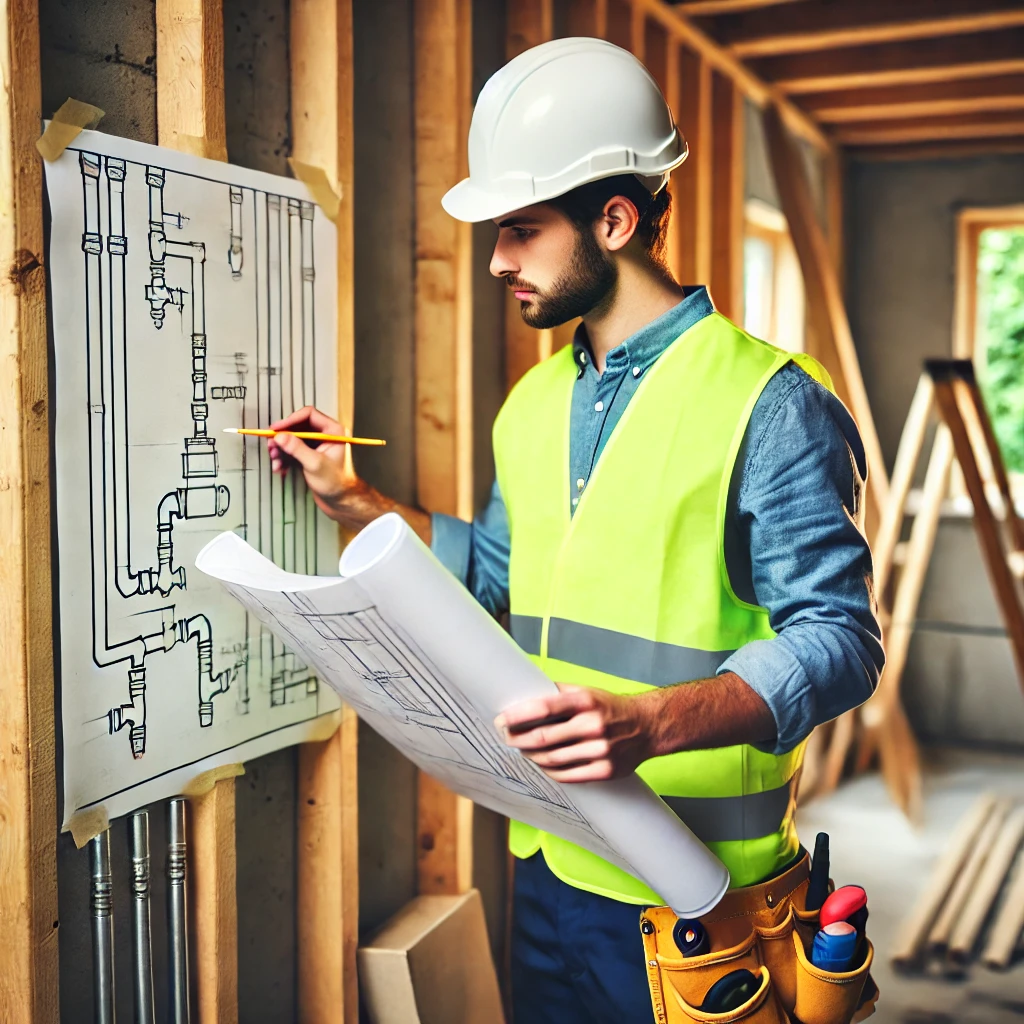
Plumbing Layout and Planning
Properly designing and planning the **plumbing layout** ensures **efficient water flow, waste disposal, and long-term system reliability**. This section helps track and complete the necessary steps for **pipe routing, fixture placement, and code compliance**.
Who to Hire:
Plumber, Plumbing Engineer, General Contractor
Cost-Saving Tips:
- Use **PEX piping** instead of copper for a flexible, cost-effective solution.
- Plan **water supply and drainage routes efficiently** to minimize material waste.
- Purchase **plumbing fixtures in bulk** for supplier discounts.
Review Blueprints to Identify Pipe Routes and Fixture Locations
Review the blueprints to plan pipe routes and identify fixture locations.
Why It Matters: Ensuring proper pipe placement prevents installation conflicts and improves water flow efficiency.
Who to Talk To: Plumbing Engineer, General Contractor.
Contact Information (E.G. People involved with Task)
Mark Pipe Pathways on Walls and Floors
Mark the paths where pipes will be installed on walls and floors.
Why It Matters: Accurate markings guide plumbers during installation, reducing errors and rework.
Who to Talk To: Plumber, Site Supervisor.
Contact Information (E.G. People involved with Task)
Ensure Compliance with Local Plumbing Codes
Ensure that the design complies with local plumbing codes.
Why It Matters: Compliance with plumbing codes prevents legal issues and ensures safe water distribution.
Who to Talk To: Plumbing Inspector, General Contractor.
Contact Information (E.G. People involved with Task)
Rough-In Plumbing
Install **pipes and fittings** before walls and floors are closed to establish a reliable plumbing system. Proper rough-in plumbing ensures **efficient water flow, drainage, and compliance with plumbing codes**.
Who to Hire:
Plumber, Plumbing Inspector, General Contractor
Cost-Saving Tips:
- Use **PEX piping** instead of copper for a more affordable and flexible alternative.
- Plan **water supply and drainage routes efficiently** to minimize material waste.
- Schedule plumbing inspections **before sealing walls and floors** to prevent costly rework.
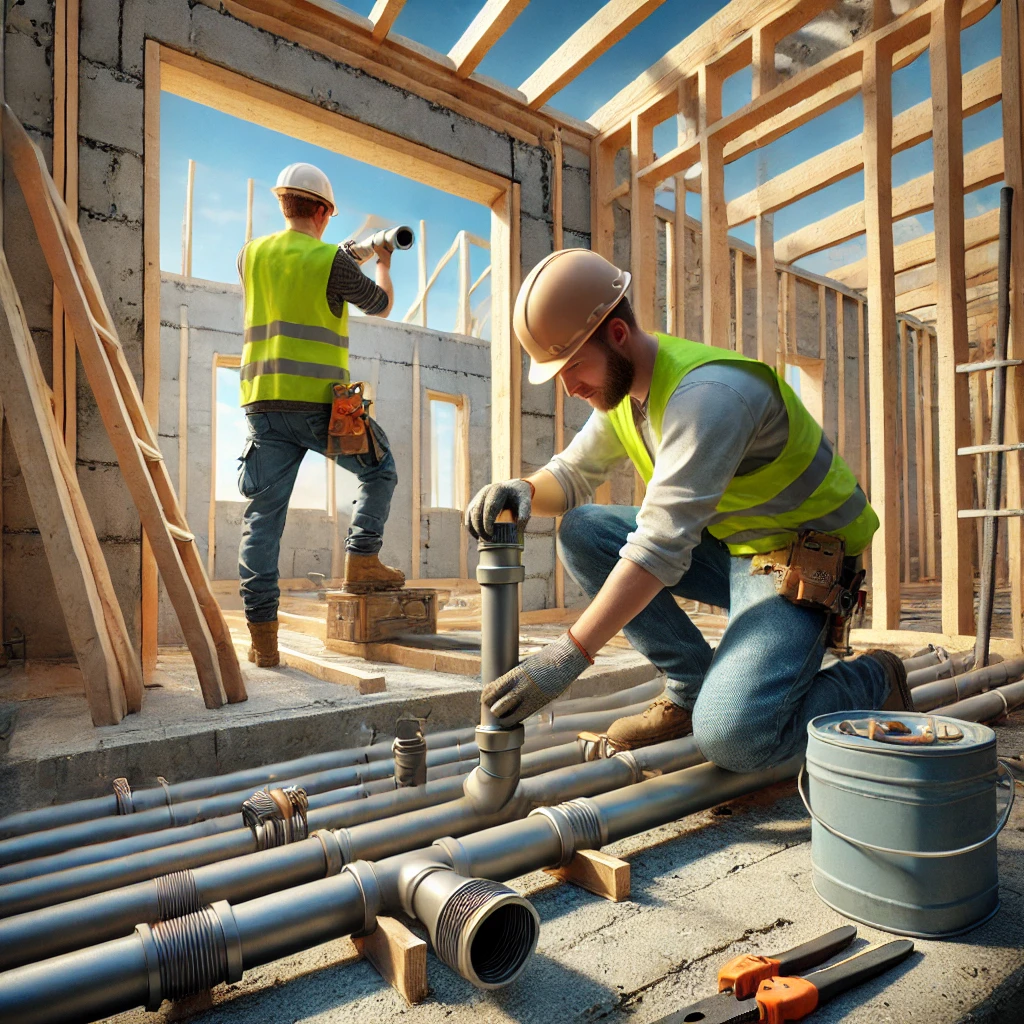
Install Water Supply Lines for Hot and Cold Water
Install the hot and cold water supply lines for plumbing.
Why It Matters: Proper water supply line installation prevents leaks and ensures a reliable plumbing system.
Who to Talk To: Plumber, Plumbing Engineer.
Contact Information (E.G. People involved with Task)
Position Drain and Vent Pipes
Position the drain and vent pipes as per the blueprint.
Why It Matters: A well-planned drainage and vent system prevents clogs, sewer backups, and odors.
Who to Talk To: Plumbing Inspector, General Contractor.
Contact Information (E.G. People involved with Task)
Test the System for Leaks and Proper Water Flow
Test the system to ensure there are no leaks and the water flows properly.
Why It Matters: Identifying leaks early prevents costly water damage and ensures compliance with building codes.
Who to Talk To: Plumbing Contractor, Site Supervisor.
Contact Information (E.G. People involved with Task)
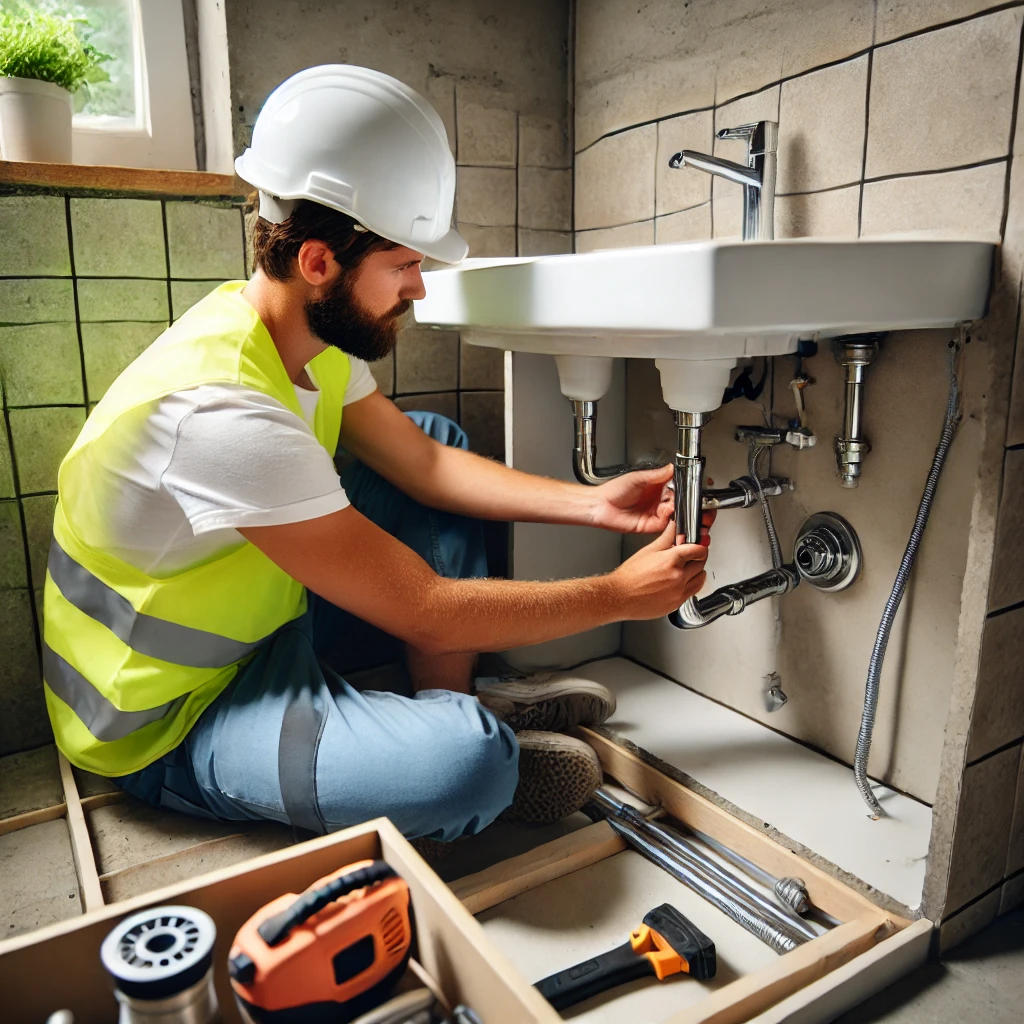
Fixture Installation
Install **sinks, toilets, bathtubs, and other fixtures** to complete the plumbing system. Proper fixture installation ensures **efficient water flow, waste management, and long-term durability**.
Who to Hire:
Plumber, Plumbing Inspector, General Contractor
Cost-Saving Tips:
- Purchase **water-efficient fixtures** to reduce long-term utility costs.
- Use **pre-assembled supply line kits** for easier and faster installations.
- Schedule a **final inspection before sealing walls** to avoid costly adjustments.
Position and Secure Fixtures as Per the Design
Position and secure the fixtures as per the design.
Why It Matters: Ensuring fixtures are positioned correctly prevents misalignment and installation issues.
Who to Talk To: Plumber, Site Supervisor.
Contact Information (E.G. People involved with Task)
Connect Fixtures to the Water Supply and Drainage Lines
Connect the fixtures to the water supply and drainage lines.
Why It Matters: Proper connections ensure reliable plumbing function and prevent leaks.
Who to Talk To: Plumber, Plumbing Inspector.
Contact Information (E.G. People involved with Task)
Test for Proper Functionality and Water Pressure
Test the fixtures to ensure proper functionality and water pressure.
Why It Matters: Ensures that plumbing fixtures operate efficiently and meet code requirements.
Who to Talk To: Plumbing Contractor, Building Inspector.
Contact Information (E.G. People involved with Task)
Electrical Layout and Planning
Design a **safe and efficient electrical system** by planning wiring routes and fixture placements. Proper layout ensures **reliable power distribution, energy efficiency, and compliance with local codes**.
Who to Hire:
Electrician, Electrical Inspector, General Contractor
Cost-Saving Tips:
- Use **LED lighting** to reduce long-term energy costs and maintenance.
- Plan **electrical wiring alongside plumbing and HVAC installations** to save on labor costs.
- Buy **electrical components in bulk** to get supplier discounts.

Review Blueprints for Outlets, Switches, and Lighting Locations
Review the blueprints to identify locations for outlets, switches, and lighting.
Why It Matters: Proper planning prevents electrical rewiring later and ensures an efficient electrical system.
Who to Talk To: Electrician, General Contractor.
Contact Information (E.G. People involved with Task)
Mark Wiring Pathways on Walls and Ceilings
Mark where the wiring will go on walls and ceilings.
Why It Matters: Clearly marked pathways prevent incorrect installations and improve wiring efficiency.
Who to Talk To: Electrician, Site Supervisor.
Contact Information (E.G. People involved with Task)
Ensure Compliance with Local Electrical Codes
Ensure the design complies with all local electrical codes.
Why It Matters: Ensures safety, prevents electrical hazards, and avoids costly rework due to code violations.
Who to Talk To: Electrical Inspector, General Contractor.
Contact Information (E.G. People involved with Task)
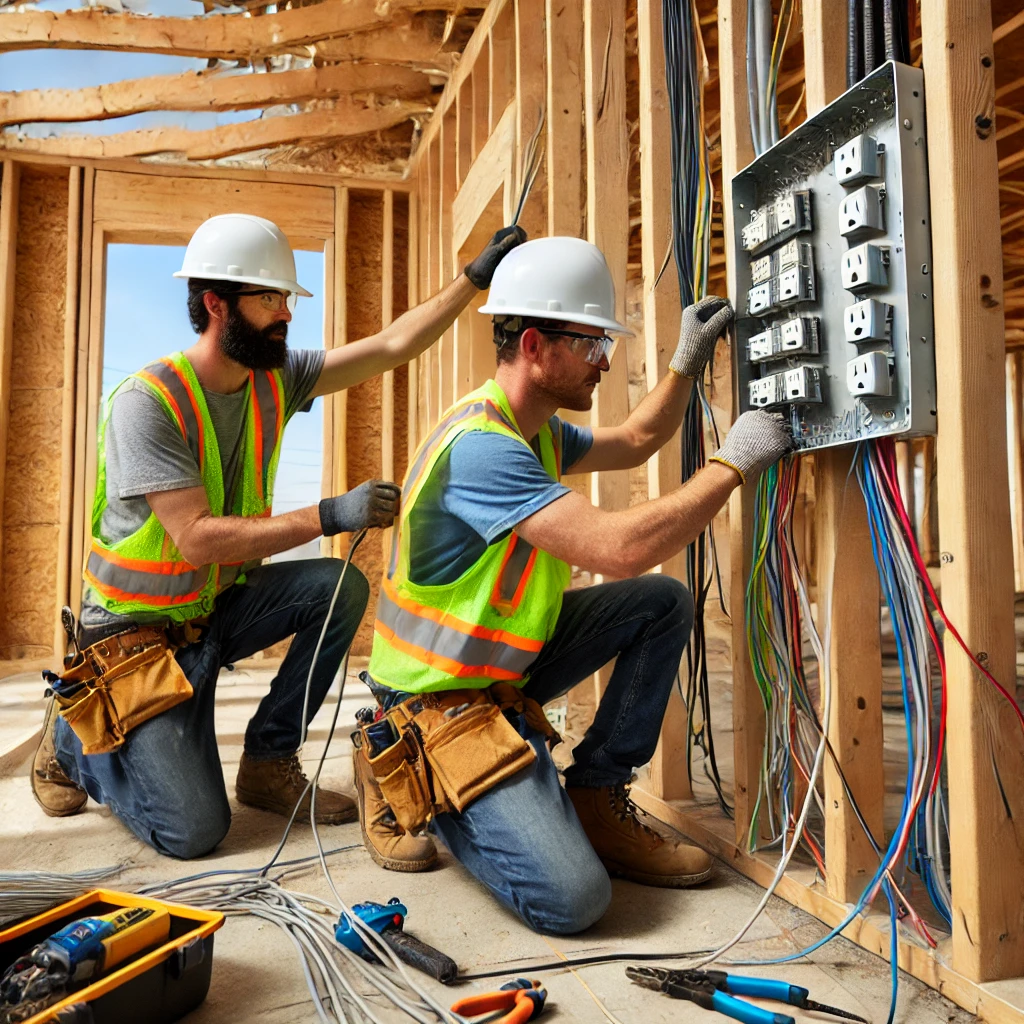
Rough-In Wiring
Install **electrical wiring** before walls and ceilings are closed to ensure a reliable power system. Proper rough-in wiring guarantees **safe connections, efficient power distribution, and compliance with electrical codes**.
Who to Hire:
Electrician, Electrical Inspector, General Contractor
Cost-Saving Tips:
- Use **pre-wired electrical boxes** to save time and reduce labor costs.
- Plan **wiring routes efficiently** to minimize material waste.
- Schedule an electrical inspection **before drywall installation** to prevent costly rework.
Run Wires for Outlets, Switches, and Appliances
Run the necessary wires for outlets, switches, and appliances.
Why It Matters: Ensures a safe and efficient electrical system before walls are closed.
Who to Talk To: Electrician, General Contractor.
Contact Information (E.G. People involved with Task)
Install Electrical Panels and Breakers
Install the electrical panels and breakers according to the design.
Why It Matters: A properly installed panel protects the home from electrical overloads and fire hazards.
Who to Talk To: Licensed Electrician, Electrical Inspector.
Contact Information (E.G. People involved with Task)
Test the Wiring for Proper Connections and Safety
Test the wiring to ensure proper connections and safety standards are met.
Why It Matters: Prevents electrical hazards and ensures compliance with safety codes.
Who to Talk To: Electrical Inspector, Electrician.
Contact Information (E.G. People involved with Task)
Fixture and Outlet Installation
Install **outlets, switches, and lighting fixtures** to complete the electrical system. Proper installation ensures **safe operation, code compliance, and energy efficiency** for long-term reliability.
Who to Hire:
Electrician, Electrical Inspector, General Contractor
Cost-Saving Tips:
- Use **pre-wired electrical boxes** to reduce labor time and costs.
- Buy **LED lighting fixtures** for long-term energy savings.
- Schedule a **final electrical inspection before drywall installation** to prevent costly fixes.
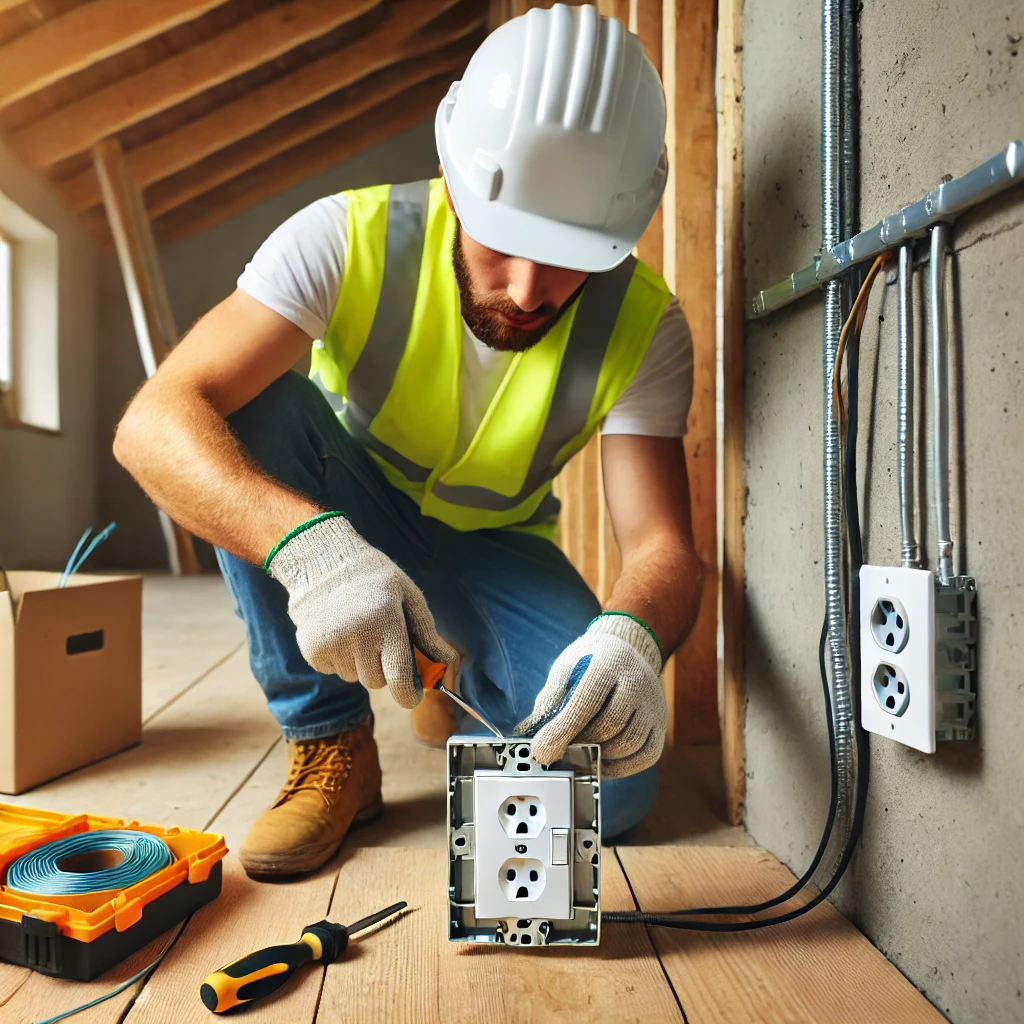
Secure Outlets and Switches in Pre-Installed Electrical Boxes
Secure the outlets and switches in pre-installed electrical boxes.
Why It Matters: Properly installed outlets and switches ensure safe and reliable electrical connections.
Who to Talk To: Electrician, Site Supervisor.
Contact Information (E.G. People involved with Task)
Mount Lighting Fixtures and Appliances
Mount the lighting fixtures and appliances according to the design.
Why It Matters: Ensures lighting and appliances are securely mounted and function properly.
Who to Talk To: Electrician, General Contractor.
Contact Information (E.G. People involved with Task)
Test for Functionality and Safety Compliance
Test the installation for proper functionality and compliance with safety standards.
Why It Matters: Ensures electrical safety, prevents fire hazards, and guarantees reliable operation.
Who to Talk To: Electrical Inspector, Electrician.
Contact Information (E.G. People involved with Task)
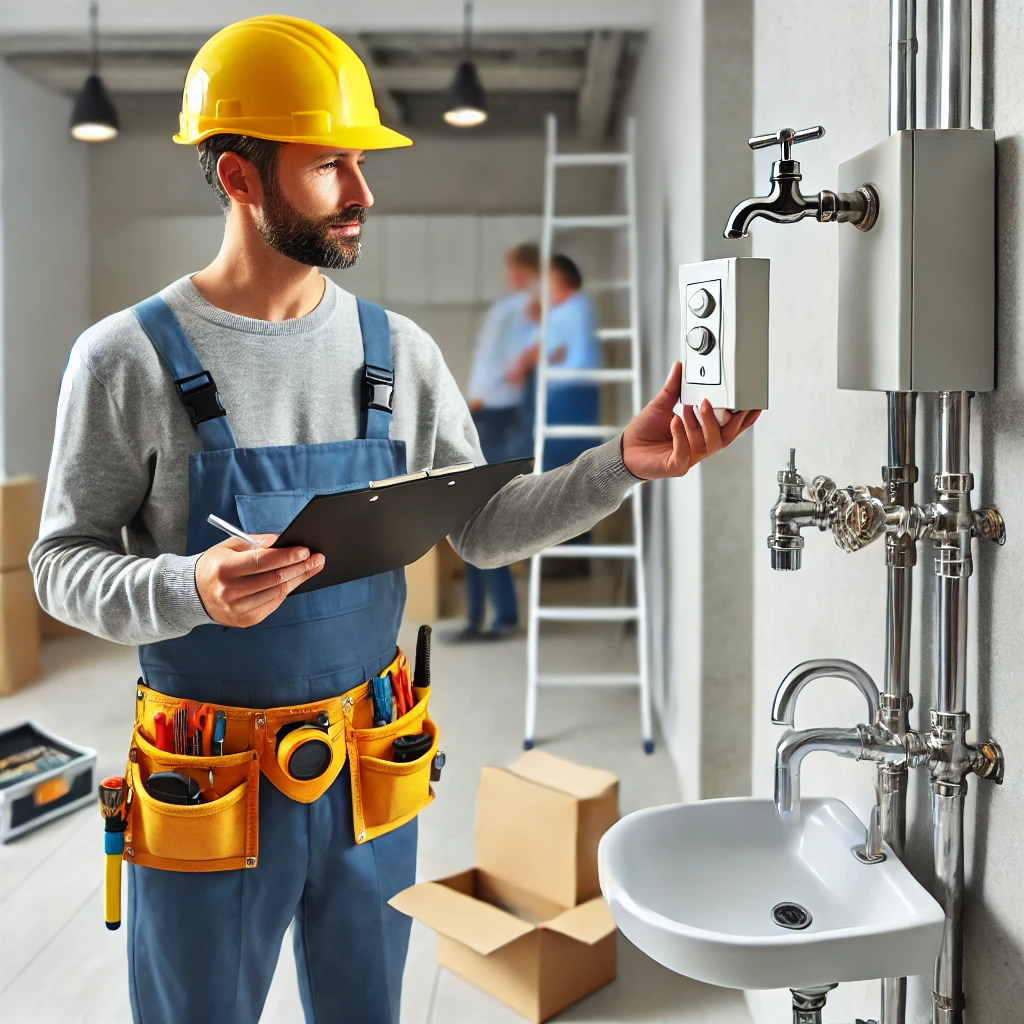
Inspection and Final Testing
Verify that **plumbing and electrical installations** meet **safety and building standards** before proceeding to the next construction phase. Proper inspections ensure **compliance, functionality, and long-term system reliability**.
Who to Hire:
Building Inspector, Electrician, Plumber, General Contractor
Cost-Saving Tips:
- Schedule **multiple inspections in one visit** to save time and reduce fees.
- Conduct **pre-inspections** with contractors to catch minor issues before official reviews.
- Ensure **all documentation is complete** to avoid reinspection delays and extra costs.
Schedule Inspections with Local Authorities
Schedule inspections with the local building authorities for verification.
Why It Matters: Inspections confirm that plumbing and electrical work complies with safety regulations and building codes.
Who to Talk To: Building Inspector, General Contractor.
Contact Information (E.G. People involved with Task)
Test All Plumbing and Electrical Systems
Test the plumbing and electrical systems to ensure they are functional.
Why It Matters: Ensuring that plumbing and electrical systems function properly prevents costly rework and potential hazards.
Who to Talk To: Electrician, Plumber, Site Supervisor.
Contact Information (E.G. People involved with Task)
Obtain Approvals to Proceed to the Next Phase
Obtain necessary approvals to proceed with the next phase of construction.
Why It Matters: Prevents delays and ensures compliance with building regulations before continuing construction.
Who to Talk To: Building Inspector, General Contractor.

